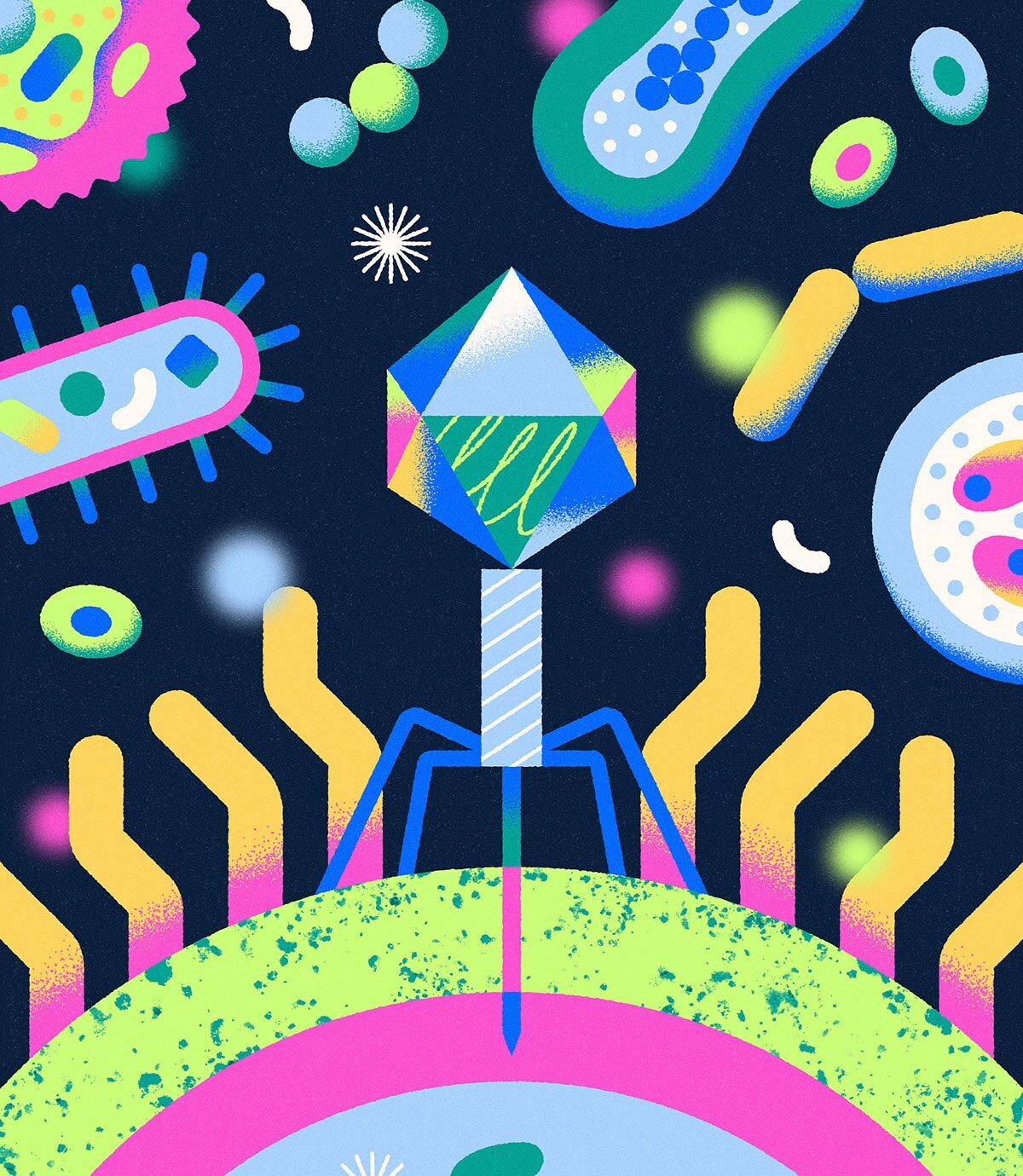As living organisms, bacteria are encoded by DNA, and DNA occasionally mutates. Sometimes genetic mutations render a bacterium immune to an antibiotic’s chemical tactics. The few cells that might escape antibiotic pressure then have a sudden advantage: with their counterparts wiped out, resources abound, and the remaining antibiotic-resistant bacteria proliferate. It’s a problem not only for the host—you or me when we are treated with an antibiotic and develop a resistant strain—but also for anyone with whom we happen to share our resistant bacteria, say, on a door handle or keyboard. In fact, most resistant bacteria develop not in people but in livestock fed antibiotics to promote growth; these resistant bacteria infect people through contaminated animal products. This is how even antibiotic “naive” people come to be infected with resistant strains of bacteria.
I see this all the time as a family doctor. A woman has a urinary tract infection. I tell her that her bacteria are resistant to this or that antibiotic, and she says, “But I’ve never taken any of those.” Welcome to the global human soup.



You can’t cheat evolution.
People often cite evolution for antibiotic resistance, but that’s not the case.
There’s an inverse relation between bacteriophage resistance and antibiotic resistance. Antibiotic resistance requires more efflux pumps and less strong cell walls, and bacteriophage resistance requires stronger cell walls and less efflux pumps.
What’s happening is allele drift within colonies towards better antibiotic resistance, but these colonies are also very susceptible to bacteriophages.
This is no different than the frequency of spots on deer in a population group increasing our decreasing over generations.
I know many people call that evolution, but I think it’s important to be precise with our definitions. These traits for antibiotic or bacteriophage resistance are already present within the genome. They each just get expressed under different conditions, and the phenotypic strength of each is inversely proportional to the expression of the other.
This isn’t a simple or straightforward relationship. Genetics are always incredibly complex, but this relationship is confirmed.
Your comment is confusing. Yes, genetic drift is evolution, so saying “people cite evolution” and then dismissing it is not a good approach.
Perhaps you mean it isn’t natural selection, but then the trait being under balancing selection (a tradeoff between phage resistance and antibiotic resistance) is still under selection. And the presence of antibiotics shifts the balance heavily in favor of resistance even if that means decreasing resilience in the absence of antibiotics.
You say the traits are already there and just need to be expressed, so perhaps it’s mutation you think is not happening. That’s often the case, but it still took mutation to create the means of resistance to begin with. Some of it is passed around on plasmids, but they the traits had to evolve in the first place. In addition, once resistance becomes dominant, there is enough diversity to select for compensatory mutations that increase the fitness of the resistant bacteria. Things like compensating for cell wall weaknesses or pumps that were initially favored despite their drawbacks.
Not “genetic drift”. Although I did forget a critical word. I meant to say “allele frequency drift” which is distinctly different than genetic drift.
Allele frequency drift simply describes a shift in how common a genetic trait exists, or is expressed, within a population group. The overall genetics of the group are the same. Even if there were no changes to the collective genetics of a population over millions of years (no evolution) you can still have allele frequency drift.
This is what I mean by “allele frequency drift isn’t evolution”. It’s a mathematical expression of the ratio a gene is expressed within a population group. It doesn’t describe any genomic changes or mutations.
The first generation can have frequency 1.0 of a trait, gen 2 can have 1.5, gen 3 can have 2.0, and then back down again over the next few generations. But generation 10 can have an (nearly) identical genome to generation 1.
I understand what you’re saying about drift, but I’m not sure that feels sufficient to explain the prevalence of anti-biotic resistance. You’re right to highlight that the genes for antibiotic resistance already exist and it’s just a question of how prevalent they are in different populations/generations, but I don’t think this excludes it from being evolution. I would consider the human use of antibiotics in medicine and agriculture to be a selective pressure that is increasing the prevalence of antibiotic resistant genes in bacteria, especially in combination with human activities that facilitate the global spread of antimicrobial resistance.
I agree that “evolution” is a pretty muddy term though, which is made trickier by the fact that with how language evolves, some people use it in a different sense than what is probably strictly “correct”. I’m a biochemist, for example, and I don’t know if I could give a strictly correct definition for evolution. Along those lines, I realise I may be misinterpreting your point.
Separate to all that, it sounds like you’re well versed on the bacteriophage stuff, are there any articles that you think cover the topic well? I’m more of a protein structure gal myself, so I only have patchy, undergrad level knowledge of microbiology stuff.
A succinct definition of evolution is “The change of allele frequencies over time.” Even “allelic drift” is evolution.
For bacteria, population sizes are big enough that simple variants like base substitutions can occur at every single base in the genome over a short period of time. Some of these are important to the development and redevelopment of resistances. Once one allele has spread enough, compensatory mutations can bring about combinations that weren’t seen before.
Antibiotic resistance is definitely an evolved trait, and it’s the reason why multi-resistance and resistance to brand new antibiotics is becoming such a problem.